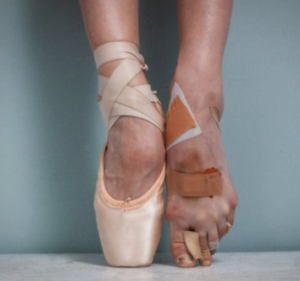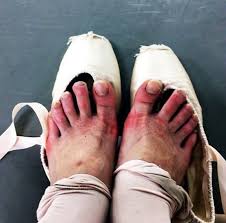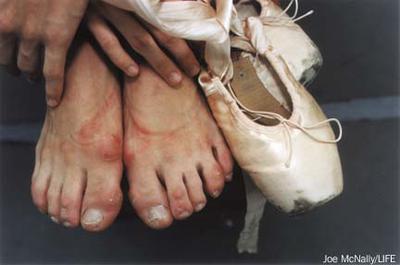Understanding Ballerina Feet
Ballet is not just an art form; it’s a journey that takes a toll on a dancer’s body, especially their feet. Ballerinas put their feet through rigorous training and intense performances, particularly when wearing pointe shoes. These shoes, designed to allow dancers to dance on the tips of their toes, can cause a variety of foot-related issues. Understanding what happens to ballerina feet after prolonged use of pointe shoes is essential for proper care and recovery.
The Anatomy of Ballerina Feet
The feet of a ballerina are marvels of strength and flexibility. A typical ballerina’s foot consists of 26 bones, 33 joints, and over a hundred muscles and tendons, all of which work in harmony to create the stunning lines and movements associated with ballet. However, the use of pointe shoes can lead to complications including blisters, corns, calluses, and other ailments that affect overall foot health.
The Impact of Pointe Shoes
Pointe shoes are often the source of pride and pain for ballerinas. While these shoes allow for beautiful and ethereal movement, they can also cause significant discomfort. The rigid construction of pointe shoes, combined with the pressure of dancing on the toes, can lead to conditions such as:
- Metatarsalgia: Pain in the ball of the foot due to excessive pressure.
- Plantar Fasciitis: Inflammation of the plantar fascia, causing heel pain.
- Sesamoiditis: Inflammation of the sesamoid bones beneath the big toe.
- Bunions: A bony bump that forms on the joint at the base of the big toe.
Post-Dance Recovery: Tips for Ballerina Feet
After a long day of practice or performance, it’s crucial for ballerinas to take care of their feet. The following tips can help alleviate some of the discomfort caused by pointe shoes:

1. Soaking Feet
After dancing, a warm foot soak can do wonders for relieving tension and soothing sore muscles. Adding Epsom salt can help reduce inflammation and soreness.
2. Stretching and Strengthening Exercises
Regularly performing foot and ankle exercises can enhance flexibility and strength, making the feet more resilient to the strains of ballet. Common exercises include toe curls, ankle rotations, and calf stretches. For a detailed guide regarding foot exercises, check out the ABC News article.

3. Moisturizing
To combat dryness and rough skin, applying a high-quality foot cream can keep the skin hydrated. Look for creams that specifically target cracked heels and rough patches.
4. Using Ice Packs
When experiencing pain and swelling, applying ice packs can provide relief. Aim to ice the feet for 15-20 minutes, especially after long rehearsals or performances.

Footwear Recommendations for Recovery
Choosing the right footwear post-dance is crucial for recovery. Supportive shoes can make a significant difference in reducing pain and promoting healing. Here are some recommended types of footwear:
1. Athletic Shoes
Look for well-cushioned athletic shoes that provide arch support. Brands like Brooks and Asics are known for their comfortable fit and shock absorption.

2. Orthotic Inserts
Consider using custom orthotic inserts that provide extra cushioning and arch support. These can be particularly beneficial for dancers recovering from foot pain.
3. Recovery Sandals
Recovery sandals designed for post-exercise wear can help alleviate pain while allowing the feet to breathe. Brands like OOFOS are popular among dancers for their arch support and comfort.

Footwear Comparison Table
| Footwear | Pros | Cons |
|---|---|---|
| Athletic Shoes | Good cushioning, excellent support | Can be bulky |
| Orthotic Inserts | Customizable support | May require a fitting |
| Recovery Sandals | Breathable, lightweight | Less support compared to sneakers |
Real-World Foot Experiences
Many dancers face similar issues regarding foot care after pointe shoe use. Here we’ll explore a few case studies:

Case Study 1: Sarah’s Journey
Sarah, a professional ballet dancer, initially struggled with metatarsalgia. After incorporating daily foot stretches and alternate footwear like the OOFOS recovery sandals, she noticed a significant reduction in pain. She also emphasized the importance of alternating between pointe and flat shoes during rehearsals.
Case Study 2: Michael’s Transformation
Michael, a ballet instructor, began experiencing chronic heel pain due to prolonged use of worn-out pointe shoes. Upon visiting a podiatrist, he was fitted for orthotic inserts, which provided the necessary support. This change allowed him to continue teaching without discomfort.

Case Study 3: Emma’s Shoe Evolution
Emma, an aspiring ballerina, learned the hard way about the importance of proper footwear. After suffering from bunions, she invested in high-quality pointe shoes and made sure to consult with a professional about the right fit. Additionally, she now uses ice packs after each class to ease any swelling.
Products That Promote Foot Health
Here are some recommended products that can help support proper foot health for ballerinas:

1. Foot Soaks
Products like Dr. Teal’s Epsom Salt Foot Soak provide a soothing experience while easing muscle tension. They are perfect for post-rehearsal relaxation.
2. Foot Creams
High-quality moisturizers such as O’Keeffe’s Healthy Feet Cream can soften rough skin and provide hydration.
3. Ice Packs
TheraGun Wave Roller not only provides relief by rolling out sore muscles but also integrates cold therapy.
Pros and Cons of Pointe Shoes
Pointe shoes are both a blessing and a curse for ballet dancers. Here are some pros and cons to consider:
Pros
- Beautiful Aesthetics: Pointe shoes allow for stunning visual effects during performances.
- Skill Development: They help dancers develop balance and strength.
Cons
- Pain and Discomfort: The pressure on the feet can lead to various ailments.
- Injury Risk: Improper use or fitting can result in serious foot injuries.
FAQs About Ballerina Feet and Pointe Shoes
1. How often should I replace my pointe shoes?
Pointe shoes should typically be replaced every 10-15 hours of dancing, depending on usage and the dancer’s weight.
2. What are the best exercises for foot health?
Toe raises, ankle circles, and resistance band exercises can all help strengthen the muscles of the feet.
3. Can I wear regular shoes after pointe class?
Yes, switching to supportive footwear after class is highly recommended to aid recovery.
4. How can I prevent injuries while dancing on pointe?
Ensuring proper technique, strength training, and using quality footwear can help prevent injuries.
5. Are there specific foot creams for dancers?
Yes, many brands offer foot creams designed to hydrate and repair skin after extensive use, such as O’Keeffe’s and Gehwol.
6. Is it normal for my toenails to hurt after dancing on pointe?
Yes, toenail pain is common, but it shouldn’t be severe. If you experience extreme discomfort, consult a professional.
7. What should I do if I develop blisters from my pointe shoes?
Keep the area clean, use blister pads, and allow it to heal before dancing again.
8. Can I use tape on my feet to prevent injuries?
Yes, many dancers use kinesiology tape to support the foot and prevent injuries.
9. What are the signs of overuse injuries in dancers?
Signs include persistent pain, swelling, and decreased performance ability.
10. Are there any resources for learning more about foot care for dancers?
Yes, the Rehabilitation for Dancers provides excellent resources and guidance.
11. How do I choose the right pointe shoes?
Consult with a professional fitter who can assess your foot shape, size, and arch type to find the best option.